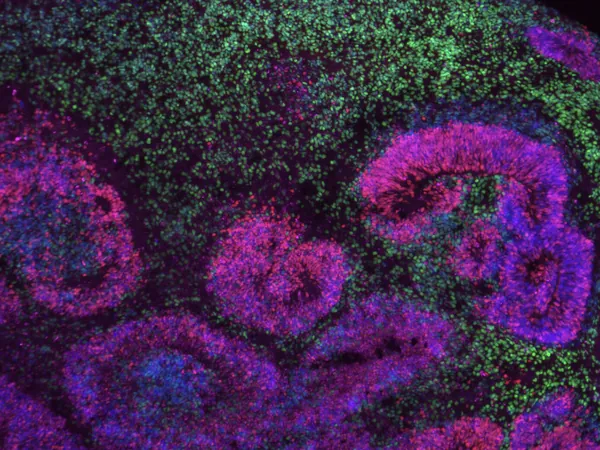
Unlocking the Secrets of the Brain: How Gene Networks Shape Neuron Development
2025-05-10
Author: Rajesh
Revolutionary Insights into Brain Development
The human brain is a complex marvel, composed of diverse cell types, each playing distinct roles in its function. Recent research has delved deep into understanding how these cells, particularly in the cerebral cortex—the brain's outer layer—specialize and fulfill their functions.
Groundbreaking Research from UCLA
Researchers at the University of California, Los Angeles (UCLA) have made significant strides in this area by utilizing single-cell transcriptomics, a cutting-edge technique that analyzes gene expression at the individual cell level. Their groundbreaking findings, recently published in *Nature Neuroscience*, reveal intricate gene networks that guide the specialization of neurons in the human cerebral cortex.
From Side Project to Major Discovery
Aparna Bhaduri, the paper’s senior author, explained, "What started as a small side project to integrate existing datasets evolved into a comprehensive study uncovering vital insights into brain cell development. We found that specific gene modules were crucial in determining how various cell types emerge in the human cortex."
Mapping the Meta-Atlas of Brain Development
The study aimed to unveil co-expression gene networks that influence cell specification in the cerebral cortex, shedding light on both healthy and abnormal brain development. Patricia R. Nano, the first author, noted that although many research teams have profiled brain development, the complexity of the brain means that each profile only covers certain developmental stages.
A Closer Look at Gene Modules
Initially, the researchers combined existing data from earlier studies that utilized single-cell RNA sequencing—an approach that details gene activity throughout brain development. By clustering genes with similar expression patterns, they identified 'gene co-expression networks' that operate at specific stages of development.
Validation and Experimentation
To validate their findings, they examined actual human brain tissues, confirming gene activity through microscopy and staining techniques. They then conducted further experiments with brain organoid models—miniaturized, 3D representations of the developing human brain—to see how these networks contributed to various neuron types.
The Genetic Blueprint of Neuron Types
Bhaduri stated, "We identified specific gene networks responsible for the development of distinct neuron subtypes, uncovering unexpected roles for genes linked to neurodevelopmental disorders. This research offers invaluable insights into the genetic processes that lead to the intricate complexity of the cerebral cortex during its early stages."
Towards Understanding Developmental Disorders
The implications of their meta-atlas extend far beyond basic neuroscience; it could revolutionize our understanding of developmental disorders like autism and intellectual disabilities. As Nano highlighted, "We’ve mapped out gene modules that delineate how cell fates arise, which can help neuroscientists identify disrupted gene networks in individuals with specific disorders, potentially leading to targeted therapies."
Future Directions in Neuroscience Research
The team is eager to build on these findings. Not only are they investigating other neurodevelopmental disorders, but they are also comparing the identified gene modules to developmental trajectories. Their work provides hope for better therapeutic strategies and a deeper understanding of how the human brain develops and functions, both in health and disease.
A Resource for Global Research
Bhaduri and her team's overarching goal is to create a valuable resource for researchers worldwide. As they continue to uncover the intricacies of the human brain, their meta-atlas promises to be a cornerstone in understanding gene networks linked to various neurological disorders.


 Brasil (PT)
Brasil (PT)
 Canada (EN)
Canada (EN)
 Chile (ES)
Chile (ES)
 Česko (CS)
Česko (CS)
 대한민국 (KO)
대한민국 (KO)
 España (ES)
España (ES)
 France (FR)
France (FR)
 Hong Kong (EN)
Hong Kong (EN)
 Italia (IT)
Italia (IT)
 日本 (JA)
日本 (JA)
 Magyarország (HU)
Magyarország (HU)
 Norge (NO)
Norge (NO)
 Polska (PL)
Polska (PL)
 Schweiz (DE)
Schweiz (DE)
 Singapore (EN)
Singapore (EN)
 Sverige (SV)
Sverige (SV)
 Suomi (FI)
Suomi (FI)
 Türkiye (TR)
Türkiye (TR)
 الإمارات العربية المتحدة (AR)
الإمارات العربية المتحدة (AR)